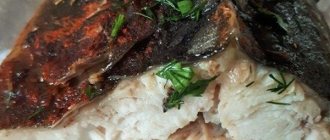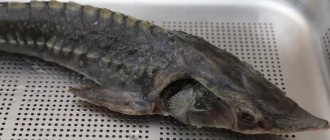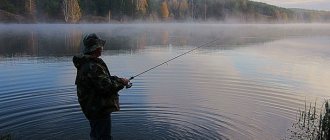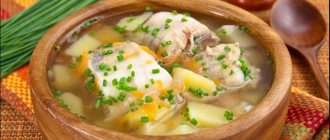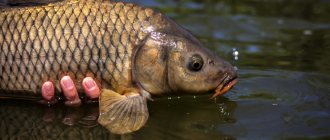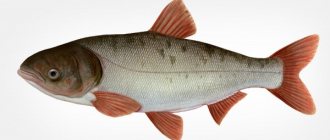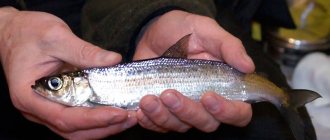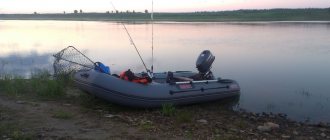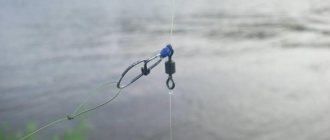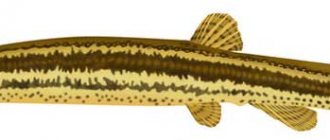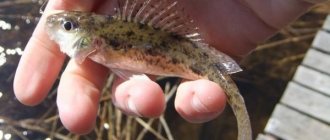Sturgeon fish: description
This family is distinguished by its elongated body and represents the most ancient cartilaginous fish on the planet. The ancestors of the modern sturgeon family inhabited many rivers even during the period of dinosaurs. This is evidenced by animal fossils that have been found by scientists. According to scientists, these fish skeletons are approximately 80 million years old.
Appearance
As a rule, the body length of adult individuals reaches 2 meters, with a weight of 50 to 80 kilograms. At one time, a sturgeon was caught, about 8 meters long and weighing more than 800 kilograms. The body is spindle-shaped, covered with scales, bone growths, as well as plates that represent fused thickened scales. On the body of the fish there are 5 such rows located along the body. Two such rows are located on the belly, and the rest, one each, on the back and sides. The number of plates depends on the specific type of sturgeon.
Interesting to know! Like any other fish, the body color of sturgeons depends on their habitat, so the shade of sturgeons can be brown, gray or sand. The belly of this fish is light, and the back is either green or olive in color.
Sturgeons have quite sensitive antennae, with the help of which the fish probes the bottom and finds food for itself. The mouth of sturgeons is not large and toothless. It is located at the bottom of the pointed part of the muzzle. After birth, young individuals still have teeth, but as they grow older, they wear down. Sturgeons have fairly hard fins, a large swim bladder, and two pairs of gills. The skeleton of this fish does not contain bone tissue and consists of cartilaginous tissue, and instead of a spine there is a notochord.
Behavior and lifestyle
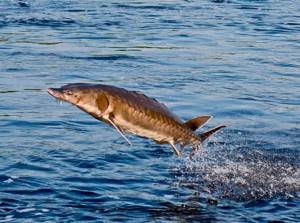
Sturgeon can be found at depths of up to 100 meters, while they lead a bottom-dwelling lifestyle, where they find food for themselves. These fish are adapted to living in cold water environments, as well as to long periods of fasting. Due to the behavioral characteristics of the sturgeon, they are divided into:
- On migratory species, which for their livelihoods choose coastal, slightly saline waters of the seas and oceans within the estuaries of rivers. Before spawning or for wintering, migratory sturgeon species rise to the upper reaches of rivers, covering impressive distances.
- On semi-anadromous species, which do not make significant migrations and reproduce directly at river mouths.
- On freshwater, for which a distinctive feature is a sedentary lifestyle.
Lifespan
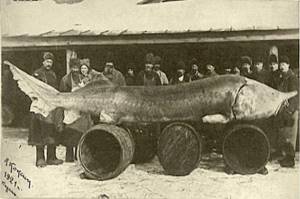
Sturgeon can live from 40 to 60 years, while beluga can overcome the 100-year barrier, Russian sturgeon can live for half a century, and stellate sturgeon and sterlet live a maximum of 30 years. The life expectancy of sturgeons is influenced by many factors, including natural ones, associated with seasonal fluctuations in water temperature, as well as anthropogenic ones, in the form of pollution of seas and oceans.
Possible problems and their solutions
No type of business is without difficulties. Sturgeon farming is no exception. Thus, over the course of a year, 10% of the fry consistently die. This is a natural process, and there are no methods to influence it.
Another problem could be an accident or power failure. As a result, the lighting regime is disrupted, which causes the growth of fish to slow down. Installing an autonomous generator will help avoid such consequences.
Problems can also arise due to failure of cleaning systems and other equipment. If you understand the structure of these simple mechanisms in advance, you will be able to save on repairs.
Video: cleaning the filter yourself
Inappropriate conditions for keeping fish can cause them to develop the following diseases:
- Adenovirus infection. The fish shows apathy, loses weight, and death occurs in 50% of cases.
- Iridovirus infection. Sturgeons refuse food, begin to accumulate at the bottom of the reservoir, and lose body weight. There is hemorrhage from the back and abdominal cavity. Death occurs in 95% of cases.
- Infection with the herpes virus is asymptomatic until the fish dies. The mortality rate is 97%.
- Flexibacteriosis appears as light spots near the fins and on the abdominal cavity. The mortality rate does not exceed 13%.
- Bacterial hemorrhagic septicemia. Sick individuals experience a lack of appetite and pinpoint hemorrhages on the body. Fish swims on the surface. The death rate reaches 70%.
- Saprolegniosis. The disease is expressed in the formation of a white coating in the tail area. The mortality rate reaches 50%.
No treatment has been developed for these diseases. Prevention is compliance with the regime for keeping sturgeons.
Types of sturgeon, photos and names
The sturgeon genus includes 17 species of fish, most of which are listed in the Red Book with the status of critically endangered. Below is a description of some types.
Siberian sturgeon (Acipenser baerii)
Large fish up to 2 meters long. Sturgeon weighs up to 210 kg. Within the species, there are 2 varieties: sharp-snouted and blunt-snouted (regular) individuals. The general population of Siberian sturgeon is divided into freshwater and semi-anadromous forms, which inhabit the Siberian rivers from the Ob to the Kolyma, and also live in Lake Baikal and in eastern Kazakhstan in Lake Zaisan. Initially, the Siberian sturgeon species was divided into 4 subspecies:
- Yakut sturgeon sturgeon (lat. Acipenser baerii chatys, Drjagin, 1948), called khatys, which lives in Khatanga, Lena, Yana and Indigirka,
- Baikal sturgeon (lat. Acipenser baerii baicalensis, Nikolskii, 1896), inhabiting Lake Baikal and having a similar morphology to the North American sturgeon,
- East Siberian (long-snouted) sturgeon (lat. Acipenser baerii stenorrhynchus, Nikolskii, 1896);
- West Siberian sturgeon (lat. Acipenser baerii baerii, Brandt, 1869).
At the end of the 20th century, scientists proved that there are no significant differences between these subspecies, and the division became unacceptable. The diet of the Siberian sturgeon includes amphipods, insect larvae (mainly caddis flies and mosquitoes), as well as mollusks and various types of small fish, especially juvenile Baikal lobster. The Siberian sturgeon interbreeds freely with the Siberian sterlet, and their offspring are called koster. The Siberian sturgeon differs from the sterlet in the smaller number of lateral bugs (up to 50). The difference from the Russian sturgeon is that the Siberian species has fan-shaped gill rakers and a sharper snout in some individuals.
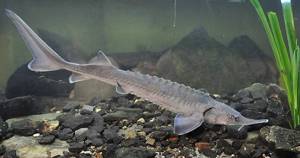
Taken from the site: www.rybarskyrozcestnik.cz
White sturgeon (Acipenser transmontanus)
A very large species of sturgeon, second in size only to beluga and kaluga, and also the largest North American fish. Conservation status: Least Concern. The unofficial name of the fish is California white sturgeon. The fish has a fairly slender body, and the length of the largest sturgeon was 6.1 m with a mass of 816 kg, although the average weight of a sturgeon usually does not exceed 10-20 kg. The dorsal row contains from 11 to 14 scutes, the lateral rows consist of 38-48, the ventral scutes range from 9 to 12. The back and lateral surfaces are painted in grayish, light olive or grayish-brown shades, the belly and underside of the head are white. The sturgeon feeds on numerous mollusks, various crustaceans, lampreys and fish, including smelt.
The white sturgeon is an anadromous fish that lives in the Pacific waters off the western coast of North America from the Aleutian Islands, located in the subarctic zone, to the state of California. Spawning grounds are located in brackish river mouths; some individuals migrate far up into fresh waters. Regular migrations into rivers for these fish are not necessarily associated with spawning. The largest populations of California sturgeon are found off the coast and in the inland waters of Washington and Oregon states, southwest Alaska, California's San Francisco Bay, and the deltas of the Sacramento and San Joaquin rivers. Dams built on the Columbia and Snake rivers isolated part of the population in the river, and over time the fish acquired a freshwater form.
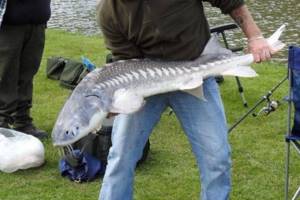
Photo by: Wald1siedel
Russian sturgeon (Acipenser gueldenstaedtii)
One of the very first artificial breeding facilities, which is highly valued throughout the world for the exceptional gastronomic qualities of meat and caviar. Conservation status: critically endangered. It has a walk-through and residential form. The Russian sturgeon differs from other sturgeons by its blunt, short snout and antennae, which grow not near the mouth, but closer to the end of the snout. The maximum length of an adult Russian sturgeon is 2.36 m with a weight of 115 kg, but usually the weight of the sturgeon does not exceed 12-24 kg. The average length is 1.45 m. The Russian sturgeon has a grayish-brown back, gray sides with a yellow tint and a whitish belly.
The dorsal row usually contains from 9 to 18 bugs, the lateral rows from 30 to 50, and the ventral rows no more than 7-12. Depending on the habitat, the diet of representatives of the species consists of amphipods (amphipods), mysids and worms. The fish diet includes sprat, herring, mullet and shemaya. Under natural conditions, Russian sturgeon produces hybrid offspring with beluga, sterlet, stellate sturgeon and thorn. Russian sturgeon is found in almost all major waterways of Russia. The main habitat of sturgeon is the basins of the Caspian, Black and Azov seas. Russian sturgeon goes to spawn in the Volga, Terek, Don, Kuban, Samur, Dnieper, Danube, Rioni, Mzymta, Psou and other rivers.
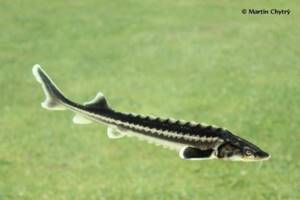
Photo by: Martin Chytry
Amur sturgeon, also known as Schrenck's sturgeon (Acipenser schrenckii, Acipenser multiscutatus)
It forms freshwater (residential) and semi-anadromous forms, which are considered close relatives of the Siberian sturgeon. But, unlike the Siberian sturgeon, the gill rakers of the Amur species are not fan-shaped, but smooth and have one apex. Conservation status: critically endangered. The Amur sturgeon reaches 3 meters in length with a body weight of about 190 kg, but the average weight of a sturgeon usually does not exceed 56-80 kg. Representatives of the species have a pointed, elongated snout, which can be up to half the length of the head. The dorsal rows of the sturgeon contain from 11 to 17 bugs, the lateral rows from 32 to 47, the abdominal rows from 7 to 14. Amur sturgeons eat caddis and mayfly larvae, various crustaceans, lamprey larvae and small fish. The sturgeon lives in the Amur River basin, from the lower reaches and above, to Shilka and Argun; during the breeding season, schools go up the river to the Nikolaevsk-on-Amur region.
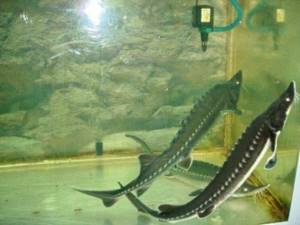
Photo by: Elena Lukina
Atlantic sturgeon (Acipenser sturio)
A very large representative of the genus, the maximum size of which can reach 6 meters. The maximum recorded weight of the fish is 400 kg. The bugs of the Atlantic sturgeon are much larger than those of other sturgeons, and on the tail there are 3 pairs of large fused scutes. On the back of the sturgeon, oblique rows of small diamond-shaped plaques and from 9 to 16 large light bugs are clearly visible. The lateral rows contain from 24 to 40 scutes, on the belly from 8 to 14. The back of the fish is grayish-olive in color, the sides are much lighter, the belly is white.
Sturgeon food includes small fish (anchovies, capelin and sand lance), as well as worms, crustaceans and mollusks. Initially, the Atlantic sturgeon was found off the coast of Europe in the Baltic, North, Mediterranean and Black Seas, as well as off the North American coast from Hudson Bay to South Carolina. Schools of fish went to spawn in the rivers Svir, Volkhov, Elbe, Oder, and Danube. Despite its impressive historical range, the Atlantic sturgeon is critically endangered and has been virtually extirpated in most areas. Currently, the Atlantic sturgeon is found only in the Black Sea and the Bay of Biscay, where no more than 300 individuals live. According to foreign sources, a small number of Atlantic sturgeon are found only in the Garonne River in France.
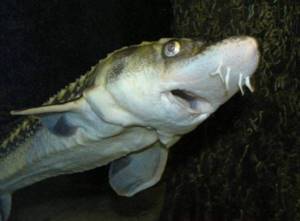
Lake sturgeon (Acipenser fulvescens)
A large representative of the genus, biologically close to the blunt-nosed sturgeon. The maximum recorded length of adult fish is 2.74 m with a body weight of 125 kg. The body is colored black with gray or greenish-brown, the belly is white or yellowish. Basically, lake sturgeon feed on all kinds of bottom organisms; fish is consumed to a lesser extent. The lake sturgeon is a North American and Canadian resident found in the Great Lakes system, Lake Winnipeg, and the Mississippi, Saskatchewan, and St. Lawrence river basins. Conservation status: Least Concern.
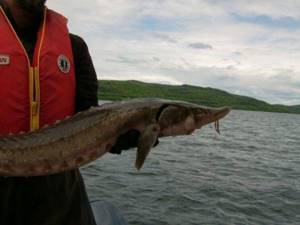
Photo credit: Fungus Guy
Sakhalin sturgeon (Acipenser mikadoi)
The rarest and rather poorly studied species, biologically identical to the green (Pacific) sturgeon. The average length of adult specimens reaches 1.5-1.7 m with a weight of 35-45 kg, the largest individuals grow up to 2 m in length and weigh about 60 kg. Adults have a large, blunt snout. The color of the Sakhalin sturgeon is greenish-olive, there are from 8 to 10 bugs on the back, from 27 to 31 on the sides, from 6 to 8 on the belly. The food of the Sakhalin sturgeon consists of various inhabitants of the muddy bottom: snails and other mollusks, insect larvae, small shrimp, crustaceans, and small fish. The species' range covers the cold waters of the Sea of Japan, the Sea of Okhotsk and the Strait of Tatar; the fish goes to the Tumnin River in the Khabarovsk Territory to spawn.
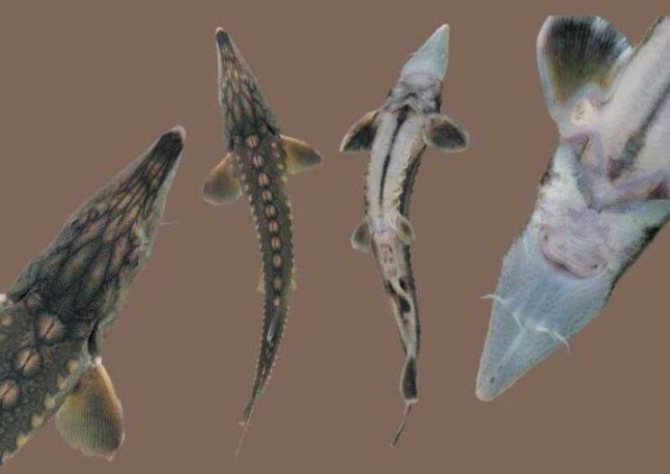
Taken from the site: www.ichthyo.ru
Persian sturgeon, also known as South Caspian or Kura sturgeon (Acipenser persicus)
An anadromous species, a close relative of the Russian sturgeon. It is on the verge of extinction. The maximum size of a sturgeon is 2.42 m and weighs 70 kg. Representatives of the species have a large, long, slightly curved snout and a gray-blue back, blue sides with a metallic tint. The Persian sturgeon also differs from other species in having fewer bugs in each row. The diet of the South Caspian sturgeon consists mainly of benthos and small fish. The natural habitat of the fish is the middle and southern regions of the Caspian Sea; a small proportion of the population inhabits the northern regions of the Caspian Sea and is found along the Black Sea coast. The main spawning grounds are located in the Volga, Ural, Kura, Inguri and Rioni rivers.
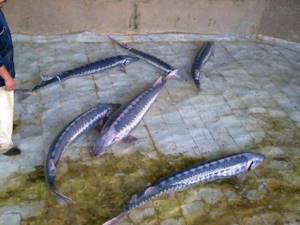
Photo by: Dorafshan, S.
Sterlet (Acipenser ruthenus)
The medium-sized representative of the sturgeon genus differs from other sturgeons in its early sexual maturation: males are ready for reproduction at the age of 4-5 years, females at 7-8 years. Another difference between the sterlet and other sturgeons is its fringed antennae and a large number of lateral bugs: usually more than 50. Sterlet is a freshwater fish, but there are a small number of semi-anadromous forms. The maximum length of a sterlet reaches 1.25 m, and its weight does not exceed 16 kg. The average size is 40-60 cm. Sterlet can be sharp-snouted or blunt-snouted, and its color varies from brown with gray to brown, its belly is white with yellowish tint. Most of the sterlet's diet consists of insect larvae, leeches and other benthic organisms; fish is eaten to a lesser extent. A valuable hybrid form of sterlet and beluga, bester, is a popular object of economic cultivation. The natural habitat of the sterlet is in the rivers of the Caspian, Black, Azov and Baltic seas, found in rivers such as the Dnieper, Don, Yenisei, Ob, Irtysh, Volga with its tributaries, Kuban, Sura, Ural, upper and middle Kama, formerly also found in Lakes Ladoga and Onega. Some of the population was moved to the Neman, Western Dvina, Pechora, Onega, Amur, Mezen, Oka and a number of artificial reservoirs, although the fish did not take root everywhere. Conservation status: vulnerable species.
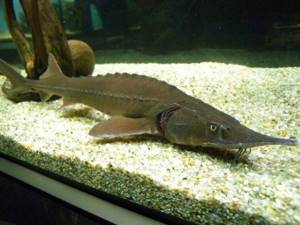
Photo by: weisserstier
Stellate sturgeon (Acipenser stellatus)
An anadromous species of sturgeon, closely related to the sterlet and sturgeon. Sevruga is a large fish, reaching a length of 2.2 m and weighing about 80 kg. The stellate sturgeon has an elongated, narrow, slightly flattened snout, accounting for up to 65% of the length of the head. The rows of dorsal bugs contain from 11 to 14 elements, in the lateral rows there are from 30 to 36, on the belly from 10 to 11. The surface of the back is black-brown in color, the sides are much lighter, the belly is usually white. The diet of the stellate sturgeon consists of crustaceans and mysids, various worms, as well as small species of fish. Stellate sturgeon lives in the basins of the Caspian, Azov and Black seas; sometimes fish are found in the Adriatic and Aegean seas. During the breeding season, the sturgeon goes to the Volga, Ural, Kura, Kuban, Don, Dnieper, Southern Bug, Inguri and Kodori.
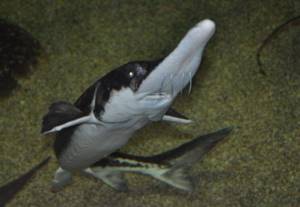
Photo by: Lubomír Klátil
Home breeding of Siberian and Russian sturgeons as a business
Sturgeon is a freshwater fish, one of the most ancient representatives of its species. It has an elongated body and an elongated head, pointed towards the oral cavity. There are Russian and Siberian sturgeons. There are some differences when growing them:
- The Siberian sturgeon has good survival rate, which was noted at all stages of the biological cycle. This helps to minimize risks during artificial breeding.
- During wintering, the Siberian sturgeon, unlike the Russian sturgeon, does not come to the surface of the water to obtain oxygen, so the fish can be kept in cages completely submerged under ice. Waste does not exceed 10.4%. Also during this period there is less loss of live weight than in the Russian species.
- Siberian sturgeons have a slightly lower growth rate than Russian sturgeons - from 238 g (two-year-old fish) to 989 g (eight-year-old fish).
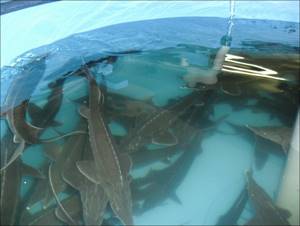
Breeding sturgeon is a difficult but profitable activity
The sturgeon family also includes sterlet, beluga and stellate sturgeon. All these fish have the ability to adapt to any living conditions, even if they change frequently. Thanks to this quality, sturgeon are successfully bred at home.
Photo gallery: fish of the sturgeon family
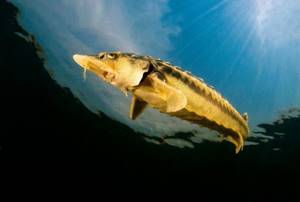
Russian sturgeon
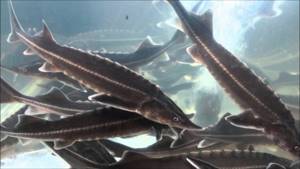
Siberian sturgeon
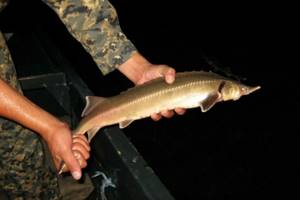
Sterlet
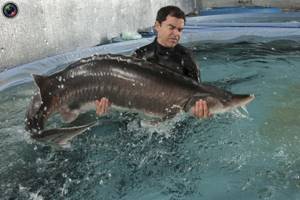
Beluga
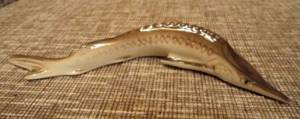
Stellate sturgeon
Fish farming allows you to make a good profit. The fishery is gaining popularity due to the following factors:
- Sturgeon meat and caviar are popular products. And the level of competition in this area today is relatively low.
- The business does not require large start-up investments.
- You don't need to have any special knowledge. Today there is enough literature containing the necessary information. The necessary instructions can also be found on the Internet.
- Breeding sturgeon does not take much time. It takes 3-4 hours a day to care for fish. The only exception is the sorting period. On these days you will have to devote 15–16 hours to work.
- The business begins to pay off within 7–9 months.
Video: organizing a sturgeon farm
To create a farm, you need to purchase and install specialized equipment. You can do something with your own hands. And also choose and prepare the room properly.
Sturgeon spawning
With the exception of certain species, sexual maturation in sturgeon occurs quite late: males are ready to breed at the age of 5 to 18 years, females mature at the age of 8 to 21 years. The time of maturation depends on the habitat: the further north the fish live, the later they are ready for reproduction. Reproduction does not occur every year. Spawning of female sturgeon occurs once every 3-5 years, males spawn more often. After reproduction (spawning), the sturgeon does not die, unlike some other fish species.
The spawning migration of anadromous and semi-anadromous sturgeon species is significantly extended in time and lasts from early spring to November, and its peak occurs in mid-summer. Early migrating sturgeon (spring species) spawn in the same year, winter forms of sturgeon overwinter in rivers and spawn the following spring.
For spawning, sturgeon choose rivers with strong currents (up to 1-1.5 m/sec) and a rocky or pebble bottom, less often sandy. Reproduction is not observed in salty or stagnant water. Spawning occurs at a depth of 4 to 25 m at a water temperature of + 15 to +20 degrees, depending on the habitat. An increase in temperature negatively affects the development of embryos, significantly reducing the number of hatched larvae, and at water temperatures above 22 degrees, sturgeon caviar dies.
Spawning occurs in bottom crevices or cracks of large stones, sometimes in well-turfed areas of the banks, flooded by spring floods. Sturgeon is one of the most prolific fish: large females are capable of laying up to several million eggs, accounting for about 25% of their body weight. The largest caviar is that of the Pacific (green) sturgeon, reaching a diameter of 4.5 mm, and the average diameter of the eggs is 2-3 mm. Moreover, 1 g of sturgeon caviar contains about 100 eggs.
Sturgeon caviar is sticky and adheres well to the substrate where it was deposited. At a water temperature of about +20 degrees, embryonic development lasts approximately 2-4 days. The incubation period can last up to 10 days. The weight of hatched larvae is about 10 g with a length of 0.8-1.1 cm.
Newborn sturgeons have poor vision and poor swimmers, so at first they hide in shelters under stones.
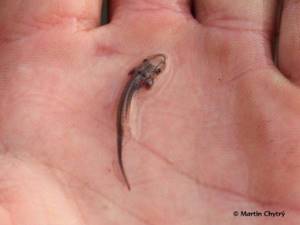
Photo by: Martin Chytry
The large yolk sac that surrounds the sturgeon larva and serves as food for it completely dissolves in 10-14 days. During this time, the fry grow to 1.6-2 cm and begin active feeding: they usually eat planktonic crustaceans (daphnia, cyclops), and then switch to mysids, gammarids, oligochids and chironomid larvae. Now the sturgeon fry acquire the features of adults and swim quite well. Juveniles of migratory sturgeon species swim to the pre-estuary space of the river, where they live for some time. The fry of some species (thorn, Russian sturgeon) linger in fresh river water, where they live for a year and sometimes a little longer. Thus, the first year of life of sturgeon fry is spent in fresh water or at the border of fresh and salt water, since concentrated salt water of the seas is destructive for young sturgeons.
Arrangement of a pond or pool
A prerequisite is the presence of water supply, sewerage, uninterrupted supply of heating and electricity. It is advisable to purchase generators. They will come in handy in case of a power outage. There are two options for sturgeon breeding:
- in ponds;
- in swimming pools.
The basement of a house is suitable for breeding fish in a pool. But the room should be quite spacious, at least 30 square meters. meters.
Pool
For a novice entrepreneur, this option will be the most suitable (and profitable). Experts call this fish breeding technology RAS, which means “installation of a closed water supply.” In practice, this is expressed in the construction of one or more connected pools with recirculation, to which water purification systems are connected.
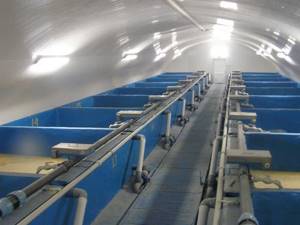
Sturgeon breeding pools can be placed in a spacious basement
First, you will need to purchase a plastic pool (preferably round) with a depth of 1 m and a diameter of 1.5–2 m. Using one such container you can produce up to 1 ton of products per year. As production increases, new basins need to be installed. When choosing them, focus on the weight of the fish:
- for individuals weighing up to 300 g, you will need a round pool with a depth of 0.8 m and a diameter of 1.5 m;
- for fish weighing from 300 g to 2 kg - a container 1.2 in depth and 2.2 in diameter;
- for larvae weighing 0.5–5 g - rectangular plastic trays 50 cm wide and deep, 2.2 m long.
It is allowed to use pools made of materials such as:
- metal with enameled surface;
- polypropylene;
- concrete covered with ceramic tiles.
You will need to create conditions that are as close as possible to the sturgeon’s natural habitat. It will be necessary to ensure the flow of purified, oxygen-enriched water into the pool, which will be partially pumped out and fed into filters to undergo several stages of purification (mechanical, biological), equalize the temperature, saturate with oxygen and eliminate bacteria. Thus, the liquid in the RAS system must be in constant circulation.
Important! In addition to standard lighting, rooms with swimming pools should have ultraviolet lamps, which are turned on once a day to disinfect air and water.
When breeding fish in pools, the water must be well saturated with oxygen. This is done by installing a compressor.
Sturgeons also require good lighting. It should be of medium intensity. Don't use too bright a light. But you shouldn’t keep fish in a dark room either.
Video: practical tips for arranging a closed water supply installation
Natural or artificial pond
Sturgeon are bred in ponds of natural and artificial origin. This allows you to save money on purchasing equipment. If you decide to build a pond on your backyard, you should consider a number of features:
1. The place should be well lit (about 5-7 hours a day in direct sunlight).
If natural ultraviolet radiation is not enough, you will have to install ultraviolet lamps for biological treatment.
2. A pit with internal slopes of the dams should be dug under the reservoir. 3. A layer of sand (15–20 cm) is poured onto the bottom, on top of which waterproofing is laid. A regular PVC or LDPE film is suitable for this purpose. Then the pit is filled with a layer of gravel (approximately 20 cm). Sturgeon prefer muddy bottoms.
To create favorable conditions for the growth of algae and other flora, you need to add organic (manure, wilted grass) and mineral fertilizers (ammonium sulfate at the rate of 2 kg per 100 sq. m or superphosphate at the rate of 15 kg per 100 sq. m).
4. After preparing the bottom, aquatic plants are planted. They are selected depending on the depth. At the very bottom it is necessary to plant tilla, pondweed, swampweed, and water buttercup. In the shallow water area (up to 40 cm deep) reeds and sedge should be placed. And among the above-water plants they choose orontium, water lilies, elodea, egg capsules, and duckweed.
On average, for one small pond (4 x 6 meters), it will be enough to plant 10 plants of each type so that they maintain biological balance and saturate the water with oxygen.
5. To prevent stagnation and blooming of water in the pond, it is necessary to install a pump filtration system by placing the pump in the deepest part of the pond and connecting it to the filters via hoses.
After arranging the reservoir, the fry can be released.
Video: DIY ultraviolet lamp for a pond
Population and species status
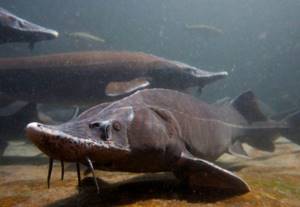
The twenty-first century may go down in history as the century during which humanity will admit that our descendants will not see many species of sturgeon, since they are already threatened with complete extinction. Human activity is due to the fact that many species are helpless against the deterioration of the ecological situation, against active fishing, which lasted almost until the end of the 20th century, as well as the actions of poachers, who are not stopped by any prohibitions.
Scientists note the fact that a decrease in the number of sturgeon was characteristic back in the 19th century, but active measures began to be taken only recently. Such measures include: the fight against poaching, fishing bans, raising fry on farms, after which they are released into natural habitats. Today, bans on sturgeon fishing in general are widespread.
Sturgeon habitats
According to their habitat, sturgeons are divided into the following species:
- freshwater;
- checkpoints. They first live in the seas, then move into rivers;
- semi-through. They mainly live in sea zones or sea-lake areas. They move to the lower reaches of rivers to spawn.
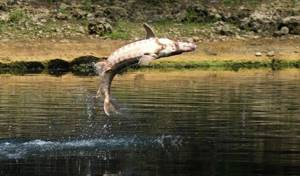
Their natural habitat is the temperate zone of Europe, the northern part of Asia and North America.
Commercial value
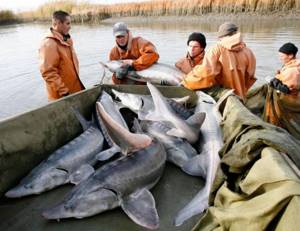
Sturgeon are valued due to the fact that they have tasty and healthy meat and caviar, if they are prepared correctly and professionally. Fish meat is easily digestible by the human digestive tract, and it is rich in proteins (up to 15 percent), vitamins and various minerals, including potassium and Omega fatty acids. Sturgeon has always, for many centuries, been present on the tables of kings, boyars, nobles of many countries and even from the times of Ancient Rome. Alexander the Great carried out long campaigns with his army, and sturgeon caviar was among the provisions.
Sturgeon are suitable for preparing various dishes, so since ancient times their meat has been used to make fish soup, soups, hodgepodge, and also sturgeons have been fried, boiled, stuffed, etc. Sturgeon meat is considered dietary, therefore it is included in recipes for weight loss. The advantage of this fish is that all parts of its body, including the skeleton, are suitable for eating various dishes.
Important point! History shows that sturgeon fat and caviar were used in the production of cosmetics, and glue used in medicine was made from the swim bladder.
Human consumption of dishes prepared from sturgeon has a lot of beneficial effects. It should also be noted that sturgeon fat is only healthy, helping the human body cope with a number of ailments. The caviar of these fish is no less valuable. The list shows value in descending order:
- The most valuable beluga caviar, which is distinguished by its relatively large size and black or grayish color.
- For Russian sturgeon, caviar is in second place in value. Eggs can have different shades.
- In third place in value is stellate sturgeon caviar, which is not large in size.
Delicacy fish
Sturgeon fish can be seen on sale both live and frozen, smoked and chilled. Sturgeon are used to make balyk and various canned foods.
The sale of salted sturgeon is prohibited. This is explained by the likelihood of the presence of a painful anaerobe in meat - botulinus, which causes severe poisoning.
Once upon a time, only those that were sturgeon were classified as red fish. These are varieties such as beluga, sterlet, stellate sturgeon and sturgeon. However, these species were valued not at all for the pinkish tint of the meat, but for their excellent taste and nutritional properties . Now this generalized name has been assigned to salmon fish. Thus, red salmon is also called salmon, pink salmon and chum salmon.
There is a certain culinary and commercial classification of this fish. The first group includes sturgeon, which live in the Caspian and Black Seas. These are varieties such as beluga, sterlet and thorn, sturgeon and stellate sturgeon. The second group is salmonids, such as salmon and trout, pink salmon and chum salmon, and the last group is white salmon species (white fish and coho salmon, nelma and taimen).
The value of red fish is explained by the high content of vitamins A, B, E, PP and D, zinc, phosphorus and calcium, fluorine and iodine . But the most important fatty acid for the human body is Omega 3. This acid is needed for normal brain function, maintaining immunity and improving memory. Scientists have proven that those people who constantly include red fish in their menu do not experience depression, and also reduce the risk of hypertension and cancer by 3 times.
Source: zoolog.guru
Sturgeon wintering place 5 letters
How long does sturgeon grow?
Sturgeon grows quite slowly: large species of sturgeon at the age of 2 years grow only to 28-35 cm in length, by 4 years the growth doubles. At the age of 8, the sturgeon has a body length of about 1 m, and only by the age of 12 does it reach the average size for the species.
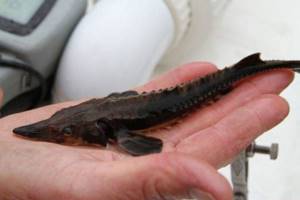
Photo credit: US Fish and Wildlife Service Southeast Region
Sturgeon - benefits and harm
The calorie content of sturgeon is 160 Kcal per 100 g.
Sturgeon contains easily digestible proteins, due to which the product is very quickly digested and is often included in various diets. The composition of sturgeon meat is rich in rare beneficial acids, including glutamic acid, as well as vitamins B, C, A and PP. Delicious sturgeon meat contains a lot of useful macro- and microelements: potassium, phosphorus, calcium, magnesium, sodium, chlorine, iron, chromium, molybdenum, nickel, iodine and fluorine.
Sturgeon caviar is saturated with healthy proteins and lipids, and its calorie content is about 200 Kcal, so the product is recommended for use by people who are weakened after a serious illness and have undergone aggressive treatment.
Regular consumption of sturgeon meat, which contains healthy fatty acids, has a beneficial effect on blood vessels and heart muscle, lowering blood cholesterol levels and reducing the risk of myocardial infarction. The product has a positive effect on the growth and strengthening of bone tissue, and also promotes skin regeneration.
Fishing
At the beginning of the 20th century, sturgeon fishing in Russia was on a grandiose scale, and the amount of fish caught was greater than in all countries of the world combined. Therefore, despite the extreme fertility of sturgeon, the population has declined catastrophically and since the beginning of the 21st century, fishing for almost all types of sturgeon has been completely prohibited in Russia.
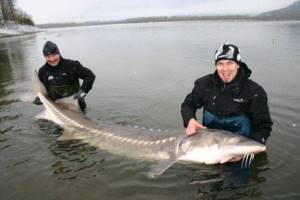
Taken from the site: homed.us
Diet and nutrition of sturgeon
Sturgeons feed at sea depths from 3 to 50 meters. Young representatives do not go into such distances and prefer to stay at depths of 2 to 5 meters. The basic food for these fish are shellfish. The so-called shellfish fields are fertile places for sturgeon to eat. The most valuable representative of mollusks is Abra. This type of mollusk has “settled” in the Caspian Sea for a long time, and sturgeon love it very much. If fishermen set themselves the task of how to catch sturgeon, then the sturgeon himself strives to find accumulations of Abra mollusks.
Other inhabitants of the underwater world are also gastronomically attractive to sturgeon: Black Sea goby, anchovy, sprats. In the Caspian Sea, sturgeon loves to eat sprat.
Interesting facts about sturgeon
- Sturgeon fish is one of the oldest and most sought after fish on earth. Archaeological finds dating back to 3 thousand years BC. e. showed that sturgeon caviar was already successfully used in canned form by sailors in those days. In the army of Alexander the Great, sturgeon caviar was used as food for soldiers.
- In the middle of the 20th century, an Atlantic sturgeon weighing 213 kg was caught in the Neva, from which 80 kg of caviar was obtained.
- In the last century, one observant French woman noticed that the hands of women working in sturgeon caviar processing plants, despite their hard work, remain beautiful and smooth. Then the miraculous properties of black caviar were urgently studied and a line of cosmetics was launched, which enjoyed incredible success. Currently, the production of such cosmetics has been suspended due to its unprofitability.
Methods of catching sturgeon
Sturgeon fishing methods use pieces of fish or worms as bait on bottom tackle. The worms must be placed on the hook in a bunch. Some anglers use plant bait with a strong odor. Sturgeon bait should be large in size, but not hard.
When fishing for sturgeon, you can use bait, but you shouldn’t get too carried away with it, otherwise the fish will get full and won’t pay attention to the bait. Since the sturgeon fish strongly resists, you need to use a strong braided fishing line.
Sturgeon fishing begins after spawning. Sturgeon can be found in places with little current, between dams and at the mouths of tributaries. When fishing, they use donks, jig spinning rods, and feeder gear.
To catch sturgeon in artificial conditions, a catch will be enough.
{banner_vnutri-kontenta-3}
Use in cooking
In the food industry, sturgeon is valued primarily for its tender, nutritious meat. Its fillet has a characteristic fishy taste, vaguely reminiscent of pork. Sturgeon meat is excellent for any culinary delight: boiling, stewing, frying, baking, smoking, pickling, stuffing. In addition, it is used to prepare kebabs, aspic and canned fish.
The second indisputable advantage of the product is waste-free. The volume of inedible parts of sturgeon is no more than 14%. Moreover, unlike other types of fish, not only meat and caviar are used for food, but also the vertebral vein (elm) and the head. This is explained by the fact that the skeleton of a predator consists of many edible cartilages.
Sturgeon goes well with Provençal herbs, spicy ketchup, dry wine, cheese sauce, mustard and butter.
Sea animal meat is sold fresh, smoked or frozen.
What to look for when choosing fish:
- Gills. In chilled sturgeon, the breathing apparatus is dark brown. The gills of a carcass that has been stored for a long time have a gray tint, while that of a rotten carcass is green.
- Weight. The weight of high-quality fish should be at least 2 kg.
- Condition of the abdomen. A fresh sturgeon’s “belly” is pink in color without any yellowness. The presence of “scorches” on the abdomen indicates improper storage or repeated freezing of raw materials.
- Smell. Newly caught sturgeon has a pleasant fishy aroma without foreign impurities. If the carcass has a sour smell, it is spoiled.
- Fins. When purchasing frozen raw materials, you should pay attention to the tail of the fish. If it is dry and shabby, the product has been repeatedly frozen or stored for a long time.
- Skin covering. In a high-quality carcass, the protective plates are painted gray (without yellowing, bruising or scorching) and fit tightly to the fusiform body.
Remember, when purchasing frozen sturgeon, it is important to ensure that the ligature has been removed from it. This is explained by the fact that the chord releases a harmful toxin into the meat during long-term storage. Therefore, when purchasing, it is better to give preference to a live or chilled carcass, which has been stored for no more than 7 days.
Before removing the elm, first of all, get rid of the head, and then cut the tail part in a circle. After this, the chord is removed from the fresh carcass. When performing the procedure, it is important to be extremely careful so that the spinal vein does not tear.
Sturgeon caviar
This is one of the most elite and expensive delicacies in the whole world. The cost of 100 grams of product often reaches $600. The high price of fish is due to the annual decline in their population. Considering that industrial production of sturgeon is prohibited in many countries, the main suppliers of the product are artificial fish. Real black caviar has a refined, lightly salted taste with a slight aroma of seaweed. Its color varies from light gray to dark brown. Due to its high cost and peculiar coloring, the product was called “black gold”.
The delicacy is most often used as a cold appetizer with sparkling wine, vodka and dry champagne. The delicacy is served pure in crystal vases or in turtle shells with small silver spoons. In addition, sturgeon caviar goes well with butter, onions, hard cheese, eggs, vegetables and herbs. To ensure that the product does not lose its taste and “attractiveness,” it is served 15 minutes before consumption. Until this point, the snack should be stored in the refrigerator.
In addition to its excellent gastronomic properties, sturgeon caviar is highly valued in folk medicine. It contains at least 30% easily digestible proteins, 12% fatty acids, 6% vitamins and mineral salts. Caviar is extremely useful for iron deficiency anemia, nervous system disorders, osteoporosis, atherosclerosis, and chronic fatigue syndrome. In addition, the product is indicated during pregnancy and breastfeeding (due to the content of vitamin E and choline), as well as during the post-rehabilitation period after surgery (as a general tonic).
To get the maximum benefit from the product, you should use only high-quality raw materials.
Signs of violation of caviar production technology or storage regime:
- Strong sour smell. When caviar is stored for a long time (more than 3 months), lactic acid accumulates in its grains. As a result, the product acquires a pungent odor.
- Thick consistency. This “defect” signals that the caviar has been over-salted in production. A properly preserved delicacy is always crumbly, and the eggs do not contain mucus or released proteins.
- Bitterness. Unpleasant taste, in 80% of cases, is characteristic of an over-salted product of low quality. Along with this, the bitterness of the delicacy is imparted by intermediate metabolites formed as a result of the oxidation of fatty acids (in case of violation of the raw material production technology).
- Excess fluid. The release of brine most often indicates weakening of the grain during long-term storage or repeated defrosting of the raw material.
- Weakened grain. If the eggs burst easily when pressed, the product was not salted in a timely manner.
Interestingly, unscrupulous sellers use vegetable oil and potassium permanganate to disguise expired caviar. To identify such additives, you need to take a pinch of grains with your fingers and then carefully feel them. If the product is very shiny or slips in your hands, it most likely contains vegetable oil.
The best: Tsar-Fish Trade House (Russia), Aquatir LLC (Moldova), Alaska LD LLC (Ukraine), Russian Caviar House CJSC (Russia), Mottra LLC (Latvia), Lemberg Trade House "(Germany).
In addition, sturgeon caviar is actively used for cosmetic purposes. On its basis, anti-aging products are made for the care of mature and aging skin (after 35 years). The most popular manufacturers of caviar cosmetics: “Mirra” (Russia), “Ingrid Millet” (France), “Kerstin Florian” (Sweden), “La Prairie” (Switzerland), “PFC cosmetics” (Spain), “Care and Beauty” ( Israel). These compositions stimulate the formation of collagen, promote the repair of cell membranes, increase the protective potential of the dermis, restore skin turgor, and saturate the stratum corneum with nutrients.
TOP 5 wobblers for perch
Burbot: DESCRIPTION, REPRODUCTION, HABITAT, FOOD, PHOTO, VIDEO, POPULATION
PIKE: SPECIES, REPRODUCTION, FOOD, SIZE, ORIGIN, PHOTO, VIDEO, DESCRIPTION
Tench: SPECIES, DESCRIPTION, REPRODUCE, BEHAVIOR, NUTRITION, PHOTO, VIDEO, ORIGIN
CRUCCIAN: SPECIES, DESCRIPTION, FOOD, REPRODUCE, PHOTO, VIDEO, POPULATION, BEHAVIOR
ROACH: DESCRIPTION, SPAWNING, LIFESTYLE, FOOD, PHOTO.
Description of the king fish
Sturgeon is a predatory bottom-dwelling animal that feeds on small fish, worms and mollusks. This navigator is characterized by an elongated spindle-shaped body, covered with five rows of relief scutes. Moreover, one strip of protective plates stretches along the back and sides of the animal, and the other two along its belly.
The sturgeon's head is conical and slightly flattened on top. The mouth is retractable, toothless, bordered by fleshy lips and two pairs of tactile whiskers. The average length of the fish is 0.8-1 m, weight - 10-30 kg. The color of the body depends on the habitat and ranges from gray to dark brown. The belly of fish is almost always colored light pink.
The lifespan of an individual is 40-50 years. However, sexual maturity in males occurs only at 8-14 years, and in females - 10-20 years. Sturgeon breed in spring and summer on rocky areas flooded by floods. To spawn, animals go to fresh water bodies with strong currents. After throwing the eggs, they “roll” back into the sea. Considering that fertilized eggs have an adhesive shell, they stick to the pebbles for 90 hours. After completion of the incubation period, the fry hatch from the eggs. It is interesting that at first they feed from their own resources (yolk bladder), and then the endogenous “bag” gradually resolves. The first food for the larvae is zooplankton. As a rule, young animals stay for 2-3 years in the places of “birth”, after which they roll into the sea. Further fattening of fish until sexual maturity occurs in salty waters.
It is worth noting that sturgeons are very prolific fish. During one spawning period, they can spawn up to a million eggs.
However, due to poaching and mass fishing, the fish are on the verge of extinction. To preserve the population, the sturgeon order was included in the International Red Register in 1996. Along with this, many countries periodically impose a moratorium on the production of black caviar, and also resort to artificial breeding of individuals in aquaculture enterprises.
